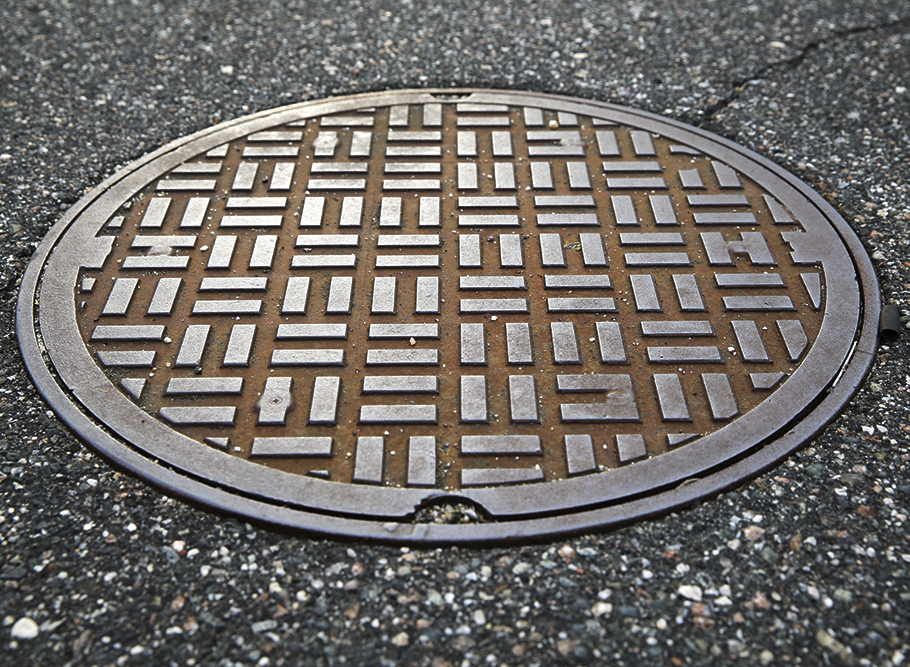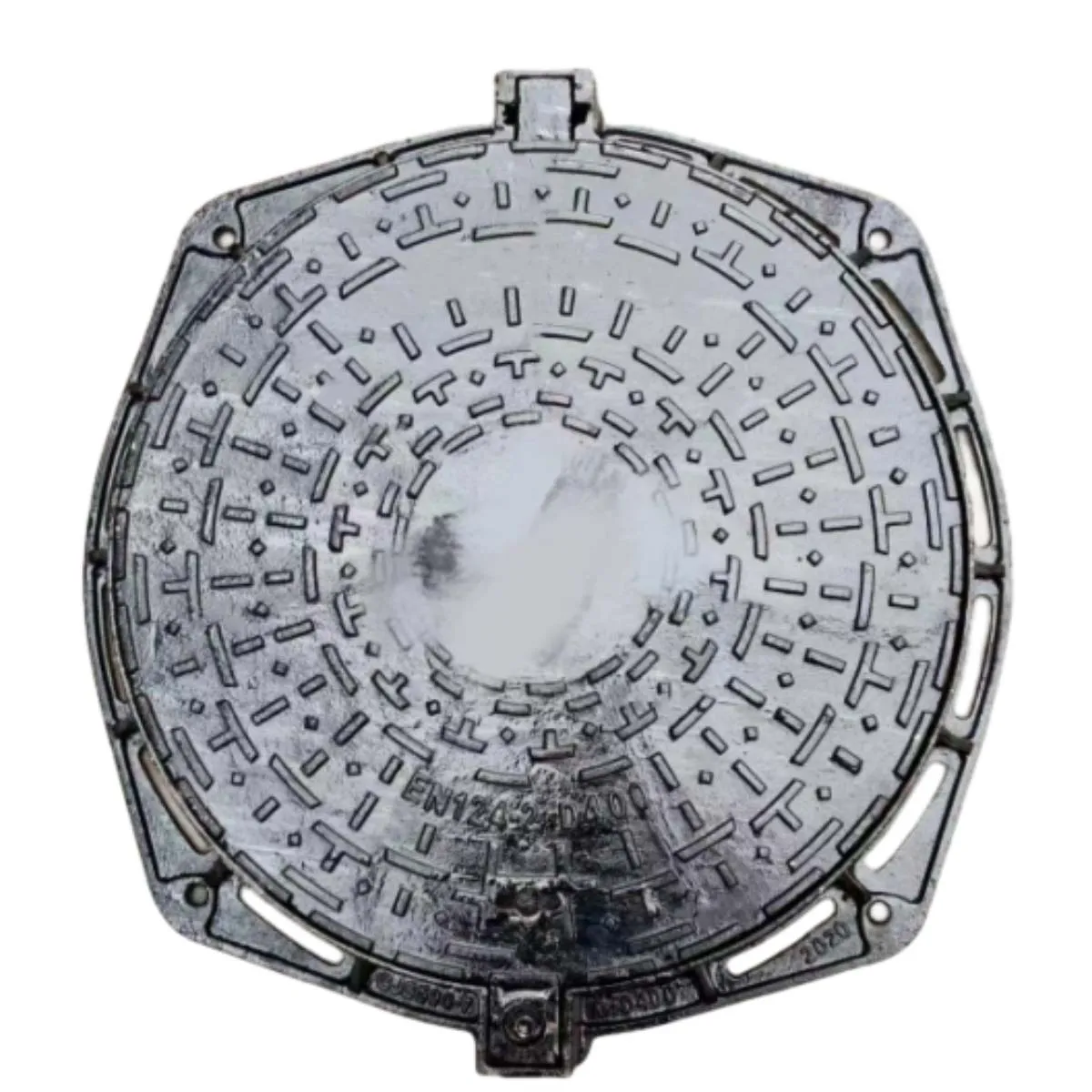Introduction
Manhole, as the name implies is an entry for maintenance personnel from the ground surface into the subterranean world of pipes, cables and utility lines. Installed out of sight, this underground labyrinth of pipes crisscrossing each other is the spine of our cities, keeping them clean and healthy. To keep it running and functioning day and night, regular maintenance and repairs is a must. The purpose of manholes is that every length of pipe is accessible for inspection and maintenance.
Manholes are provided:
- Where there is change in pipe diameter in the pipeline
- Where drains or pipelines are changing direction
- Where drains are changing gradient
- At the drain head for each pipe length
- At drain junctions that are difficult to clean

Civil engineers in Rome invented the concept of underground sewer to rid their cities of plagues caused by human contact with waste. Their water sources that they used for consumption were also contaminated as they served as open sewers. The underground sewers made sure that that waste stayed out of reach of humans and was deposited by these sewers further downstream. For periodic cleaning, they also provided access ways that were covered with stone lids that we call manholes today. Incidentally, these stone access way covers are still seen in Jerash, Jordan which was a Roman city in the old days.
EN124 D400 Circle Manhole Cover And Frame Export to Mexico
Manhole Covers
Manhole covers are removable lids that cover the manhole and prevent people and things from falling into it. They can be of different shapes like rectangular, square and circle. The most popular choice however is the circular manhole so commonly seen everywhere. Manholes are usually circular and it logically follows to have a circular manhole cover. Circular manhole covers are safe because they will not fall into the manhole where workers may be present. This may not be the case with square and rectangular covers that can fall in if placed diagonally while it is being aligned. Circular manhole covers are also easy to roll and put into place.
Cast Iron Manhole Covers
Manhole covers are made with different materials such as cast iron, ductile iron, concrete and in some cases, with glass reinforced plastic (GRP). Cast iron manhole covers are preferred because they are strong, cheap and easy to cast. A heavy manhole cover is essential to ensure that the cover does not get dislodged by pressure from gasses released in the drains and also from sucking pressure of fast moving vehicles. Unpainted cast iron inherently possesses rust resisting properties that make it an excellent choice to ensure best performance and long service life. Though other materials for manhole covers are available, the strength of cast iron cannot be overstated when it comes to resisting earth and pavement pressures.

Properties of Cast Iron
- Due to its hardness, cast iron is resistant to abrasion and denting
- Cast iron has good fatigue strength, which is the highest stress that a material can bear before it breaks
- Cast iron is ductile and therefore able to deform without fracturing
- Cast iron is malleable and hence will not rupture when deformed under compression
- Cast iron is elastic in nature enabling it to return to its original shape after deformation
- Cast iron has good tensile strength which is the longitudinal stress that a material can withstand without tearing
- Cast iron is time tested and proven for its inherent strength
Manufacturing of Cast Iron Manhole Covers
Cast iron means iron that has been poured into a cast or mold; hence the name. Manhole covers are cast using gray cast iron which is a type of iron having a graphitic microstructure. Gray cast iron consists of the element iron and alloys carbon and silicon which give cast iron its well-known strength and durability.
Cast iron manhole covers are manufactured in foundries where scrap steel collected is melted and alloyed. The melt is poured into casts or molds to manufacture the required design and shape of the manhole cover. The design and shape of manhole covers vary as per requirement. To ensure that the molten metal consists of the correct percentage of iron and alloying metals, proper analysis is carried out prior to casting. Bar test specimens of the same molten metal that will be used for the manhole covers are cast and tested for strength and ductility. The test is carried out by placing the bar in a tensiometer that pulls on the bar ends till failure occurs. Tests have showed that cast iron components have higher safety factors than those of ductile iron.
Below are the steps involved in making cast iron manhole covers.
- Making the pattern
Manhole patterns can be of any design but are usually restricted to concentric circle pattern, basket weave or waffle. Each manhole cover has two patterns, one for the top part which is decorative, and the other for the lower half which is usually flat or designed in a spider web pattern. Neenah Foundries has pattern shops that come out with 15 to 20 new patterns every day ranging from small changes made to existing patterns to new patterns as specified by customers. CNC machines are used to construct patterns made of wood, aluminum, plastic and metal. Metal patterns are very durable and strong making them useful for manufacturing manhole covers in large scale. To allow for shrinkage while cooling, the patterns are designed to be marginally larger than the intended size of the finished manhole cover.
- Preparing the mold
Molds are made by using green sand tightly placed and compacted into boxes called flasks with the top and lower patterns forming the top of the flask or cope and base of the flask or drag respectively. The upper mold contains holes or risers and vents for the purpose of pouring the molten iron and allowing gasses to escape. The riser connects to horizontal channels at the junction of the two molds so that the molten iron is fed at multiple locations to prevent voids in the final cast. Once the sand is set, the patterns are removed, resulting in a hollow mold of the top and lower portions of the manhole cover. These halves are then placed in a metal frame for the next step.
- Melting and casting
Scrap steel is melted in a crucible, induction, electric arc or reverberator furnace at 1500° C or 2700°F. The required alloys carbon and silicon, and flux to bind to impurities to create slag are added to the molten iron. The slag is lighter than iron and floats to the top from where it is removed. The molten iron is then poured into a metal ladle with a long handle which is then carried to the sand molds contained in the metal frames and poured through the riser. Green sand has a lower auto-ignition temperature than the temperature of the molten iron allowing the organic material present in the sand to use up all the oxygen present in the mold, preventing oxidation of the manhole cover. Trapped gasses can cause bubbles in the casting.
- Cooling
For the manhole cover to be removed from the mold, an hour and half is usually sufficient but complete cooling takes about 24 hours. Once the casting is completely cooled, it is placed on a grate and vibrated until all the sand has been removed. The used sand is sorted through a cyclone to remove unusable fine sand, and to sift out the slag if any is present.
- Finishing
For intricate castings with delicate designs, finishing is an important process, however; cast iron manhole covers do not require excess finishing except removing the frames, runners and risers. The bearing surfaces can be shot-blasted and machined to ensure that it lies flat in the frame.
Uses of Manhole Covers
Manhole covers are used wherever there is a manhole, simply because the hole needs to be covered up to prevent accidents and to protect the public from harmful gasses, fumes, heat, high voltage and explosions. Cast iron manhole covers are preferred because they are heavy duty, strong, long lasting and are not dislodged easily. Plain and decorative manhole covers are used depending on where they are to be installed. Manhole covers are commonly known to be used to cover manholes for water drains, sewer drains, electric cable trenches and telecommunication lines. They can also be used as decorative additions to driveways, yards and walkways. Manhole covers are also used for industrial application such as for storage tanks and silos, surge tanks, for road tankers carrying petroleum and acid, pressure vessels etc.

